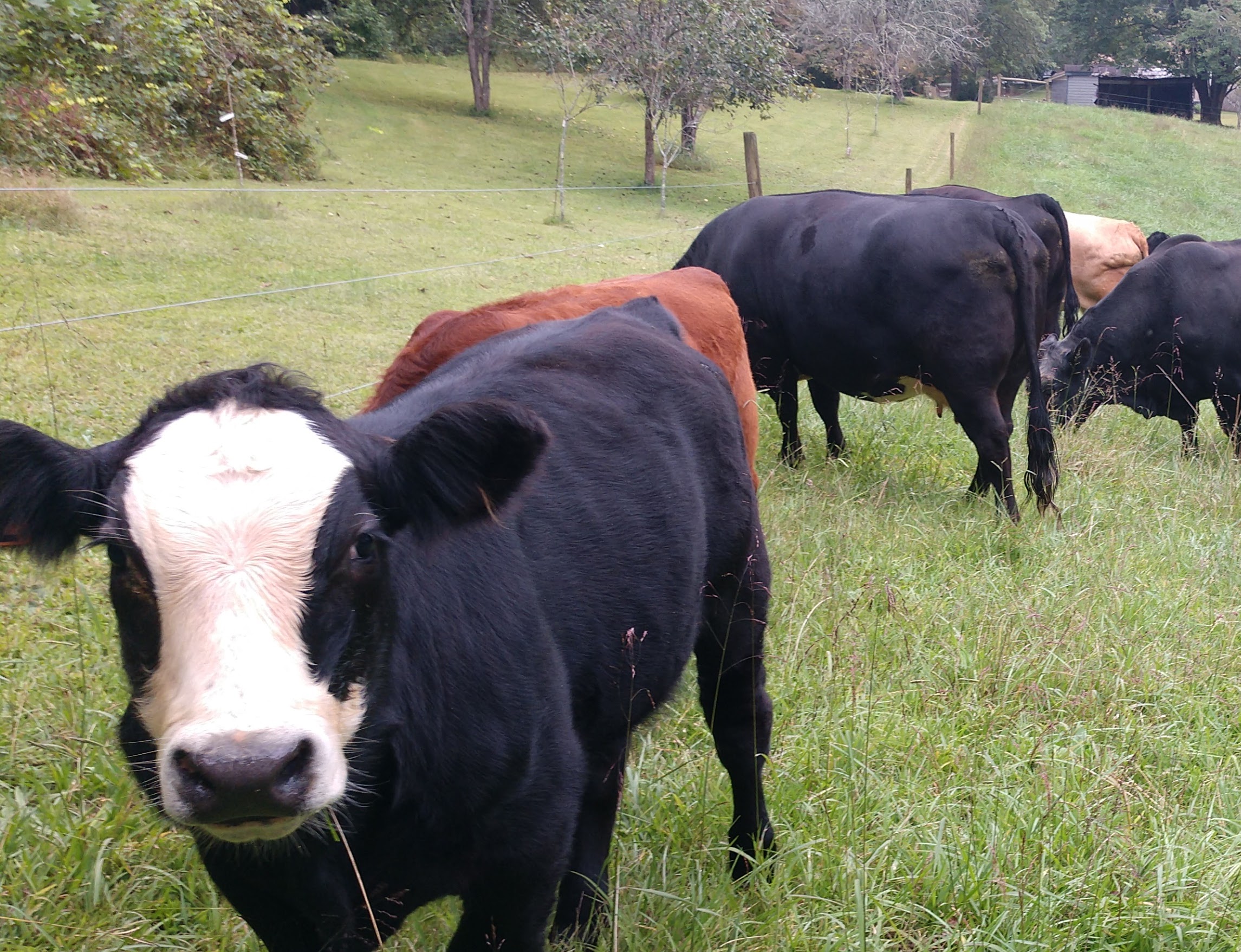Planting Grass, Cattle and Covid, and Nematode Questions
go.ncsu.edu/readext?743108
en Español / em Português
El inglés es el idioma de control de esta página. En la medida en que haya algún conflicto entre la traducción al inglés y la traducción, el inglés prevalece.
Al hacer clic en el enlace de traducción se activa un servicio de traducción gratuito para convertir la página al español. Al igual que con cualquier traducción por Internet, la conversión no es sensible al contexto y puede que no traduzca el texto en su significado original. NC State Extension no garantiza la exactitud del texto traducido. Por favor, tenga en cuenta que algunas aplicaciones y/o servicios pueden no funcionar como se espera cuando se traducen.
Português
Inglês é o idioma de controle desta página. Na medida que haja algum conflito entre o texto original em Inglês e a tradução, o Inglês prevalece.
Ao clicar no link de tradução, um serviço gratuito de tradução será ativado para converter a página para o Português. Como em qualquer tradução pela internet, a conversão não é sensivel ao contexto e pode não ocorrer a tradução para o significado orginal. O serviço de Extensão da Carolina do Norte (NC State Extension) não garante a exatidão do texto traduzido. Por favor, observe que algumas funções ou serviços podem não funcionar como esperado após a tradução.
English
English is the controlling language of this page. To the extent there is any conflict between the English text and the translation, English controls.
Clicking on the translation link activates a free translation service to convert the page to Spanish. As with any Internet translation, the conversion is not context-sensitive and may not translate the text to its original meaning. NC State Extension does not guarantee the accuracy of the translated text. Please note that some applications and/or services may not function as expected when translated.
Collapse ▲This week I want to share three questions we received at the Caldwell Extension Center. I hope you find these questions and their answers helpful.
Question: Is it too late to plant grass seed?
Answer: It is not too late to sow cool season grass. Fall is the best time for renovation and seeding of cool-season lawns, pastures, and hayfields. September and October are great months to sow tall fescue in lawns, as well as sowing tall fescue or orchardgrass in pastures.
Spring-established tall fescue is more susceptible to drought, heat, fungal diseases, and weed encroachment. With normal weather patterns, spring seeding is not likely to result in a year-long stand of healthy tall fescue. So do not delay; seed now.
When seeding lawns, start with core aerification. This reduces soil compaction. Getting good soil-to-seed contact is essential. A typical tall fescue seeding rate is 5 to 6 pounds of seed per 1000 square feet. Germination will normally be in 5 to 10 days with soil moisture and suitable soil temperatures. As soil temperatures get cooler, germination will take 2 weeks or more with adequate moisture.
Overseeding pastures and hay fields can be done with a no-till drill. The Caldwell Soil and Water Conservation District and Ford’s Feed and Seed both have no-till drills for rent in the county. Both drills require a tractor with remote hydraulics. We recommend planting 15 pounds of pure live seed per acre for tall fescue and 12 pounds per acre for orchardgrass.

This Great Plains no-till drill was purchased by the Caldwell County Farm Bureau and is available for rent from Ford’s Feed and Seed in Valmead. (credit Seth Nagy)
Question: Can farm animals get coronavirus?
Answer: Coronavirus is a general term that includes many viruses. Before the current pandemic, cattlemen were familiar with coronavirus as a virus that causes diarrhea in calves. Types of coronaviruses have also affected swine. However, the coronavirus causing the current problem is identified as SARS-CoV-2. SARS-CoV-2 is the virus that causes COVID-19 in humans.
Currently, there are 53 animals in the United States that have been confirmed positive for SARS-CoV-2 virus. The first confirmed animal case was a tiger in New York on April 4. Since then, there have been 52 other positive animal cases. Forty six of these cases are dogs and cats. The other animals that have been confirmed positive are a tiger and 5 minks.
Mink seem to be the most affected by this virus. Mink are raised for their fur. Utah is one of the nation’s top mink producers. Nine counties in Utah are currently quarantined by the State Veterinarian, Dr. Dean Taylor. Although animal losses are high, Dr. Taylor said, “People don’t appear to be at risk from the outbreak. [There is] no sign so far that the animals are spreading it to humans.”
The American Veterinary Medical Association says, “At this time, the risk of companion animals, including pets, spreading COVID-19 to people is considered to be low. The current spread of COVID-19 is primarily a result of person-to-person transmission. Based on the limited information available to date, the risk of animals spreading SARS-CoV-2 to people is thought to be low. At this time, there is no evidence that companion animals play a significant role in spreading the virus that causes COVID-19; however, we are still learning about this virus. Healthy habits should always be practiced around pets and other animals because animals can carry germs that can cause various types of illness in people. These habits include washing hands before and after interacting with animals or handling their food, waste, or supplies.”

Currently, no cattle have tested positive for SARS-CoV-2 virus. Texas A&M University is leading a study that is exploring beef cattle susceptibility and transmission of the virus. (credit Seth Nagy)
Texas A&M University is currently leading a study funded by the U.S. Department of Agriculture National Institute of Food and Agriculture that will examine SARA-CoV-2 in the food chain. This is a study that examines what happens from the time animals enter a slaughter facility to when that product is purchased by a consumer. Although this disease is not a food borne illness, there are opportunities for this disease to spread as meat is moved through the supply chain.
This study will begin with determining the susceptibility and transmission of SARS-CoV-2 in beef cattle. Currently, there are no confirmed cases of SARS-CoV-2 in cattle.
Question: What are nematodes?
Answer: Nematode is a general term for very small unsegmented roundworms. Nematodes cannot be seen by the naked eye, and they are usually found in soil. Most nematodes are beneficial, feeding on bacteria, fungi, or other microscopic organisms, and some even provide control of disease organisms and insect pests. Soil nematodes are important for nutrient cycling in the soil and are food for larger soil organisms.
However, farmers and gardeners know more about a specific group of nematodes called plant-parasitic nematodes. Plant-parasitic nematodes damage the root system as they feed. This reduces the plant’s ability to take up water and nutrients from the soil. If there are enough plant-parasitic nematodes, then plant growth slows. In extreme cases, the plants look like they have a nutrient deficiency or are suffering from drought stress.
To diagnose most plant-parasitic nematode problems requires a sample be sent off to a lab. The technician will examine the roots and soil around the roots under a microscope. They will count and classify the types of plant-parasitic nematodes. However, root knot nematodes cause damage that is obvious without a microscope.

Root knot nematodes are the only plant-parasitic nematode that can be identified without a microscope. The root knot nematode feeding causes the plant roots to thicken and form bumps or knots. (credit Sarah Christas)
If you have agricultural questions, visit us anytime at caldwell.ces.ncsu.edu or contact us during normal business hours at the Caldwell Extension Center at 828-757-1290.




